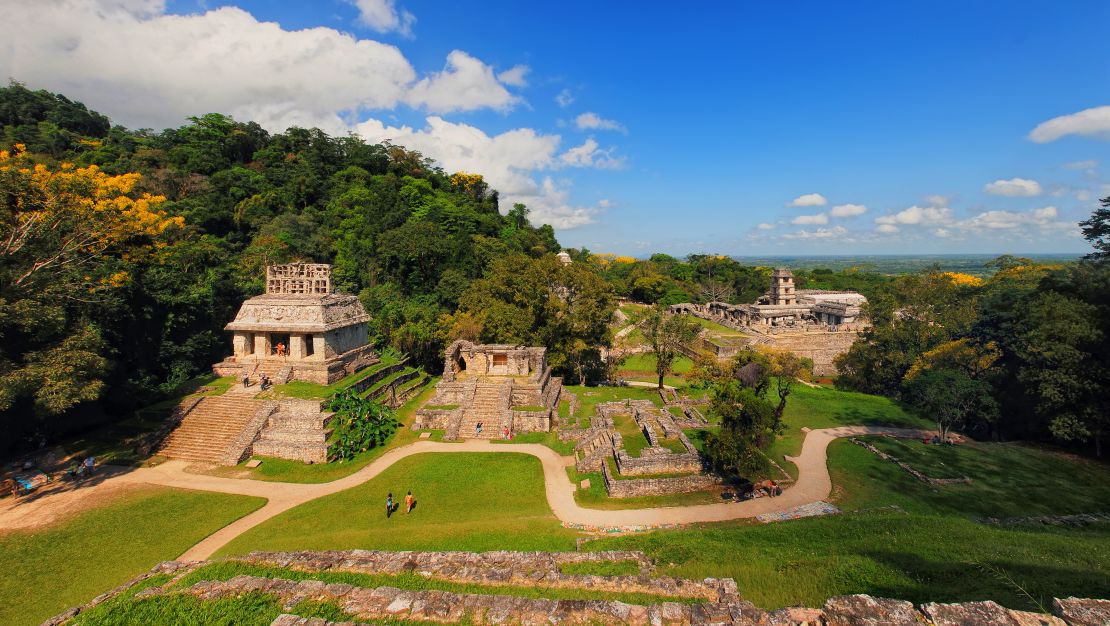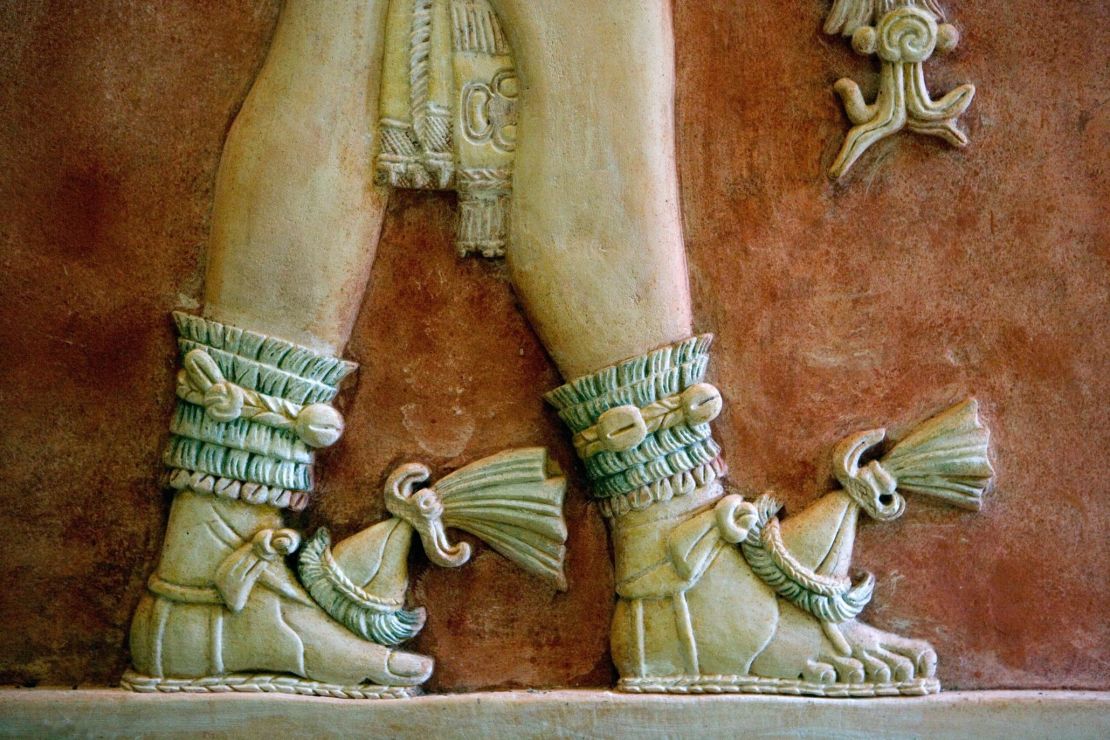The ancient city of Palenque in the state of Chiapas, Mexico, was among the most powerful Maya cities in the Classic Period of Maya civilization (250 CE – 900 CE), alongside Tikal in modern-day Guatemala and Calakmul, found in the Mexican state of Campeche.
While its Maya name was believed to be Lakamah, meaning big water, Palenque was named after the neighboring Spanish town Santo Domingo Palenque, founded in the 16th century. The Maya city of Palenque was once an important political center, which flourished between 226 and 799 CE and was later abandoned around 900 CE.
The surrounding jungle overtook the city, which lay buried and hidden until the 1700s when local Maya told a Spanish priest of its existence. It wasn’t until the 20th century, however, that it was excavated and opened to the public.
Now one of the most visually stunning Mesoamerican archeological sites, Palenque has landed on the travel map. It attracts thousands of visitors each year and is a testament to Maya ingenuity and knowledge.
The particularly exciting thing about Palenque, beyond how impressive the structures look surrounded by the jungle, is that the hieroglyphs found there have informed scholars about hundreds of years of Maya history. The hieroglyphs, which form an ancient logosyllabic writing system, talk of alliances, trade, exchange, wars and even marriage between Maya cities. All of those years, this Maya telenovela was lying protected under the flora of the forest.
In 1952, archeologist Albert Ruz Lhuillier removed a stone from the back room of the Temple of the Inscriptions and found a passageway, which led down to the tomb of Palenque’s famous emperor Pakal the Great. Emperor Pakal apparently lived for 80 years and was extremely tall (both of which were very uncommon in Maya times). No wonder, then, that his tomb was covered with the most ornately carved lid and he was buried wearing an elaborate jade death mask.
Did you know?

The lid of Pakal’s tomb led to Palenque playing an important role in New Age beliefs about the Maya calendar and the end of the world that was expected by many to occur on December 21, 2012.
The late José Argüelles, founder of Planet Art Network, declared that Pakal appeared to be floating on the lid like an astronaut. He went on to state that the ancient Maya were intergalactic beings to whom he had a direct link and from whom was receiving wisdom about the Maya calendar.
In December 2012, members of the Planet Art Network and many other people who believed that the world would end or transform in some way descended on Palenque. Some were so sure that the world would end that they bought one-way tickets to Mexico and after the day was over were left wandering around the site unsure what to do next.
Planning your visit
Palenque is open seven days a week from 8 a.m. until 5 p.m. If you get to the site at opening time you can avoid the bulk of the crowds. Midweek is also less busy than weekends.
Factor in at least two hours to explore the site and more if you want to get further off the beaten path.
The on-site museum is on the road out from Palenque and is certainly worth a visit to see many artifacts that were discovered during the excavation of the site. Explanations of Maya history, cosmology and daily life are given in both English and Spanish.
Photography tips

For a stunning view over the site and the lush jungle, get up to the top of The Temple of the Cross (el Templo de la Cruz). From there, you can take the quintessential photo of the Temple of the Sun, which is one of Palenque’s most aesthetically stunning structures.
It’s also worth leaving time to follow some of the trails that head from the archeological site into the jungle, where, accompanied by the call of tropical birds and the growl of howler monkeys, you can stumble across rivers, waterfalls and unexcavated pyramids – only 10% of the city is estimated to have been excavated to date. Exploring “off-piste” will give you an opportunity to get the shots that most visitors miss.
Where to stay
The town of Palenque is not particularly beautiful (although that’s slowly changing), so it’s worth staying at one of the nicer hotels en route to the pyramids. One option is the Hotel Villa Mercedes, just five minutes from the archeological zone. With two pools, a spa, a restaurant, and hammocks to relax in after a day exploring the site, it makes for a nice place to lay your head.
Hotel Villa Mercedes, Carretera Palenque Ruinas km 2.9, 29960 Palenque, +52 916 345 5231
Where to eat
Found just at the end of the road out from the archeological site, Maya Cañada is, apparently, Palenque’s first restaurant The traditional dishes from Chiapas served here are great for sating the appetites of hungry explorers.
A laid-back, funky spot for breakfast, lunch or dinner – which is often accompanied by live music – Cafe Jade is popular with visitors and locals. The freshly squeezed juices are the house specialty.
Maya Cañada, 29960, Primera Avenida Nte. Pte. 10, La Cañada, Palenque, Chiapas, +52 916 345 0216
Café Jade, Prolongación Av. Hidalgo Esq. 5ta Poniente Norte, #1 Zona Turistica la Cañada, 29960 Palenque, Chiapas, +52 916 345 4815
Susannah Rigg is a freelance writer and Mexico specialist based in Mexico City. Find her website here or follow her on Facebook, Twitter and Instagram.














